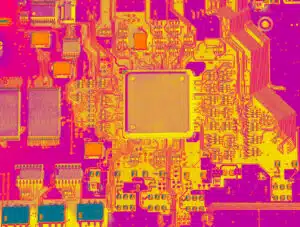By: Aaditya A. Candadai, Aalok Gaitonde, Shanmukhi Sripada, Justin A. Weibel, Amy M. Marconnet Introduction New high thermal conductivity materials have been developed to enable enhanced heat transport within electronics packages and other thermal management applications. Many of these engineered materials have anisotropic thermal properties inherent to their fabrication, … [Read more...]
Choosing the Proper Thermocouple Types for Greatest Accuracy
Most engineers involved with temperature measurement know there are several methods for measuring temperatures of fluids and solids. The oldest and most common method for measuring the temperature of a fluid such as air is the standard mercury-in-glass thermometer. However, this is not acceptable for measuring surface temperatures of solid objects. For surface temperature … [Read more...]
Radiation Basics: Making Sense of Emissivity & Absorptivity
Introduction This is the second installment in a series of articles that aims to explore a range of practical topics on radiation that are relevant to those of us focused on electronics cooling and thermal design. The last article [3] provided guidance regarding when radiation matters, with examples being natural convection environments, space applications, solar collectors, … [Read more...]
Report About the THERMINIC 2024 Workshop
By Andras Poppe and Marta Rencz The 30th THERMINIC (Thermal Investigations of ICs and Systems) workshop was held on 25-27 September 2024 in Toulouse, France at the Mercure Toulouse Centre Compans. Jean-Pierre Fradin (Icam, France) and Patrick Tounsi (INSA Toulouse & LAAS – CNRS) as local organizers and co-program chairs of the 2024 THERMINIC did a great job: Over 110 … [Read more...]
Initiation of Joint Research for Achieving High Accuracy in Evaluating Thermal Diffusivity of Silicon Nitride Ceramic Substrates
The AIST Group (consisting of National Institute of Advanced Industrial Science and Technology (AIST) and AIST Solutions Co.) and NGK INSULATORS, LTD. (NGK) have embarked on joint research regarding validating methods for evaluating thermal diffusivity of silicon nitride ceramic substrates used for power semiconductor components (power semiconductor modules) and other such … [Read more...]
- 1
- 2
- 3
- …
- 216
- Next Page »









